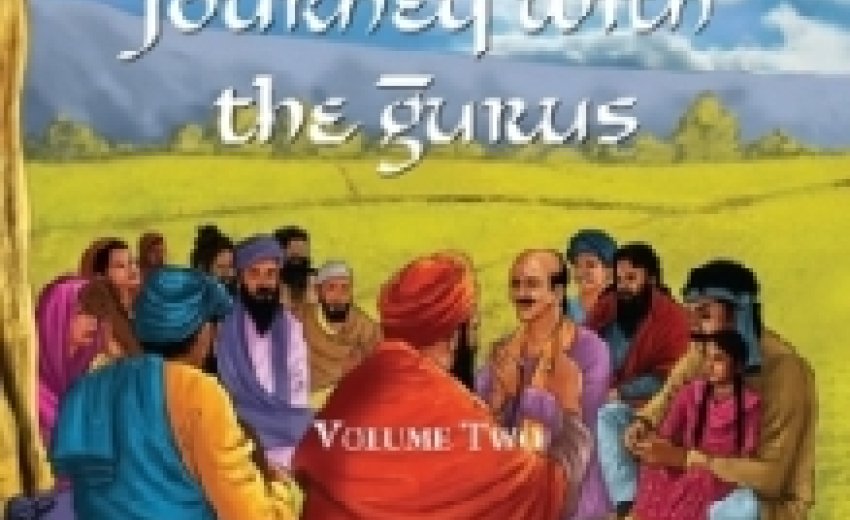|
Journey With The Gurus A Book Review by RAVINDER SINGH
JOURNEY WITH THE GURUS, Volume 2, by Inni Kaur, Illustrated by Pardeep Singh, Edited by Manjyot Kaur. Sikh Educational and Cultural Foundation, USA, 2012. English, hardcover, colour illustrations, pp 180. ISBN: 978-0-9827224-1-1. “God made Man because He loves stories” - so goes a quote attributed to Ellie Wiesel. I concur. Humans are storytelling animals and have been in the business of spinning a yarn or concocting a tale since time immemorial. Scientists now tell us we are actually wired for stories and are trapped in a world of narrative. We are meaning-seeking creatures and stories give to our lives a sense of meaning and a higher purpose. They impart moral lessons. Inni Kaur’s second volume of Journey With The Gurus continues the hagiographic tradition of janam saakhis (literally, birth stories) which is associated with the life of Guru Nanak. Janam saakhis have played a foundational role in establishing Sikh culture and tradition. Sikhs have been shaped - and continue to be shaped - by the stories that have been transmitted from generation to generation. I doubt that there is a Sikh who is not familiar with the saakhis of Guru Nanak. Saakhis do get a bad rap these days, however, especially at the hands of modern-day scholars who dismiss this genre as being akin to fiction. Indeed, imagination does play a role and saakhis weave fact and fiction to present a moral (sikhya). Regardless of our personal biases, there is immense value in saakhis that makes them worth preserving and perpetuating. I grew up on saakhis that have left an indelible mark - the only difference is that as I have grown older, I see hidden meanings as well. Saakhis are versatile: they can entertain, instruct and bear witness to Truth. Our sense of self (individual and collective) comes from an amalgamation of fact, fiction and myth. Myth plays a larger and more foundational role in shaping us than we are ready to admit. To borrow a quote from Joseph Campbell, "we need myth like we need oxygen to exist.” By “re-telling” these saakhis in simple, “child-friendly” language - English, in this case - and by presenting them in contemporary idiom, Inni Kaur brings to life the miracle that Guru Nanak was. Inni Kaur draws her inspiration from the polymath, Bhai Vir Singh - mystic, poet, historian, novelist, essayist, publisher and scholar and one of the most revered modern figures in the Sikh world. The “teaching stories” in Inni’s book are “re-told” from Bhai Vir Singh’s Guru Nanak Chamatkar or “The Miracle of Guru Nanak“. This handsomely bound second volume in the series consists of nine chapters, starting with “Homecoming,” describing Guru Nanak’s return to Talwandi after his revelation at Sultanpur, and proceeds through “Hukam,” “God’s Light In All,” “True Seva,” “True Miracle,” “Sajjan Transformed,” “A Ripple Effect,” “All Rivers Are Sacred,” and “The Four Promises.” The book’s journey begins with a map of Guru Nanak’s travels by the Chandigarh-based artist Pardeep Singh - who has filled this volume, as he had done in its precursor - with dozens of masterfully drawn, full-page colour illustrations. The pictorial rendering of Guru Nanak’s travels caught my attention because of its imaginative use of a trail of footprints to show Guru Nanak’s incessant travels across countries we know today as India, Bangla Desh and Pakistan; ancient Tibet, Afghanistan, Iraq and Saudi Arabia; meeting people of all persuasions, in caravan serais and in the village square, the street corner, the bazaar or private homes ... and spoke to them in their language. Whether it was at Hardwar showing the pilgrims the futility of offering water to ancestors or at Mecca, or in his own home in Talwandi, explaining to his parents the importance of following Hukam, Nanak's logic was irrefutable and his sincerity and unbounded love enough to melt any opposition. These learning and transforming moments were brought about, not through dogma or debate or the angry waving of scripture, or in a formalized teacher-pupil setting but through interaction in informal daily settings, in the very ordinariness of life. He did not question their sincerity but simply caused them to question their own beliefs and examine their own actions. He did not preach. That was the genius of Nanak. For me, personally, the saakhis in the book brought back fond memories of my childhood. My maternal grandmother, a wrinkled old woman as I recall her, would talk endlessly about Guru Nanak and it is from her that I first heard these stories. As a parent, I relayed them to my daughter and hope that the cycle will continue. Each chapter is followed by Discussion Points, aimed at getting children to reflect on basic concepts of Sikhi. A good aid for teachers, but it tends to distract the older reader. Also, some of the discussion points are perhaps more suited to older children and adults. But this is a minor quibble. The 180 paged book is rounded out with a useful glossary of terms. The entire project has been ably edited by Manjyot Kaur. Inni Kaur deserves our thanks for keeping the janam saakhis alive and for giving the tradition of saakhi-telling a modern twist.
Journey With The Gurus (the new volume and the previous one) can be purchased at: May 21, 2012 |
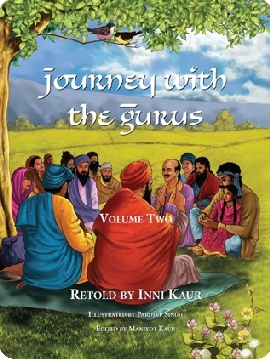 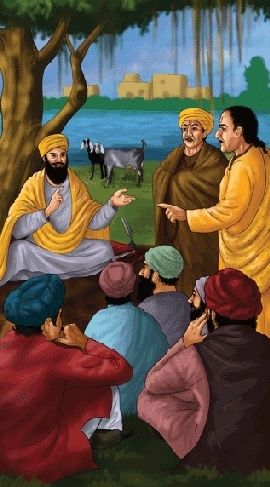 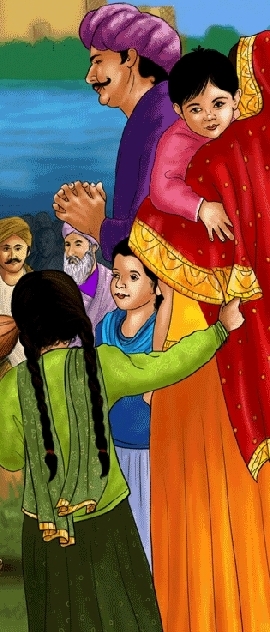 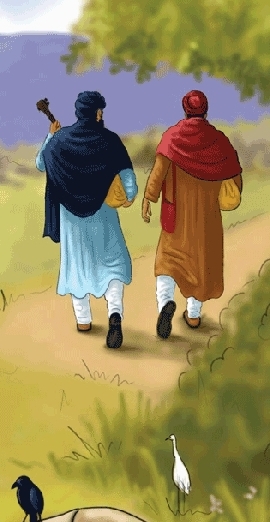 |

